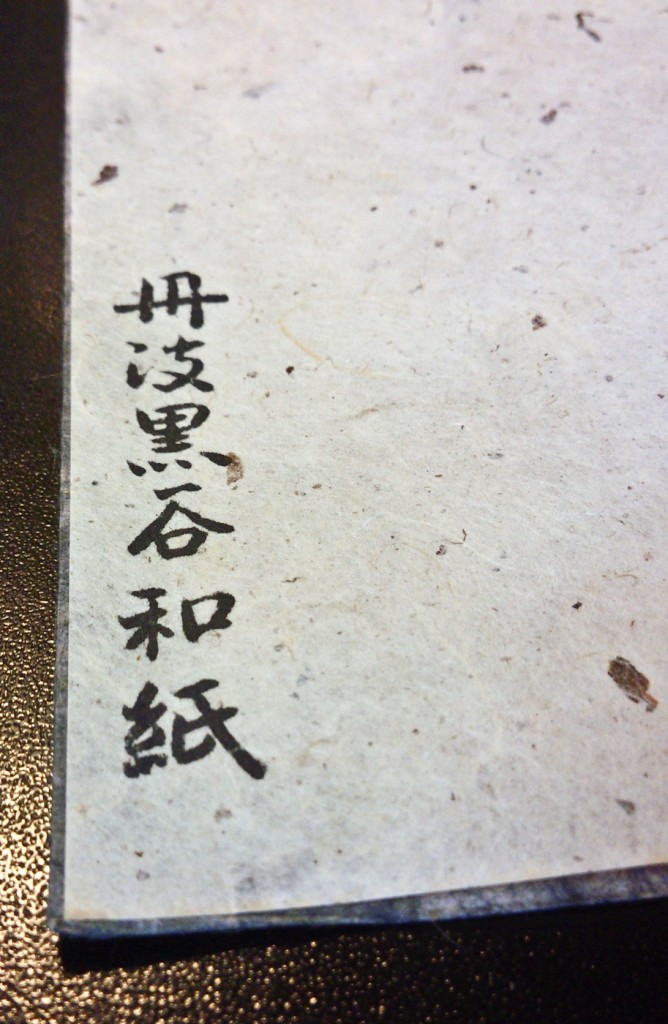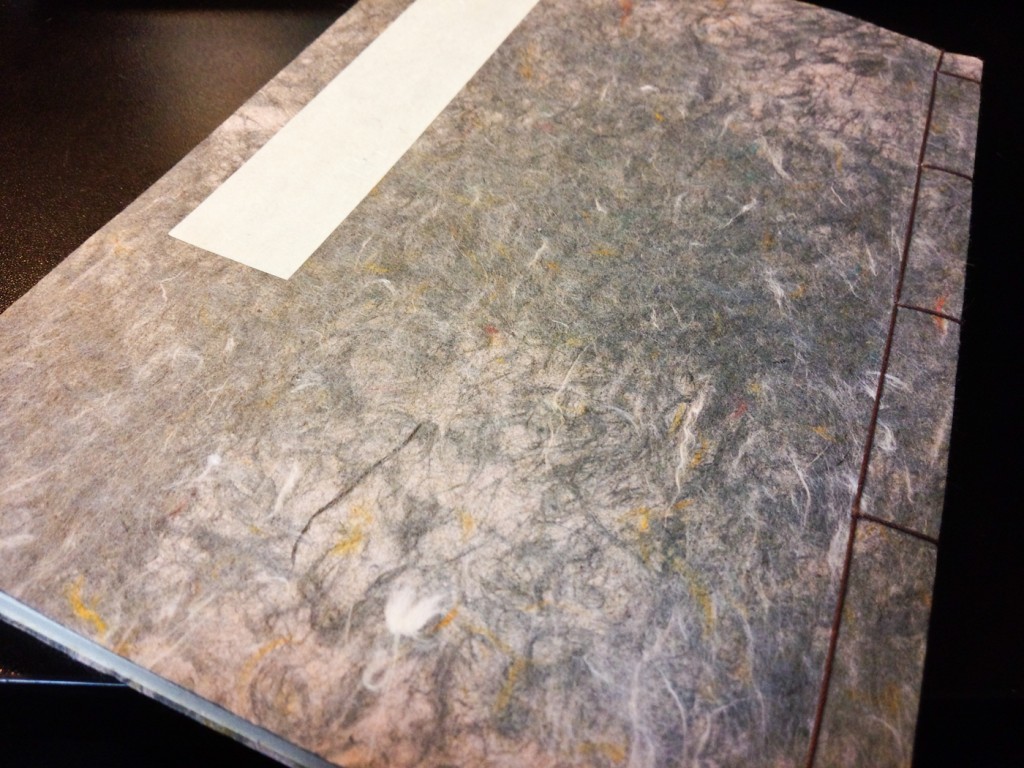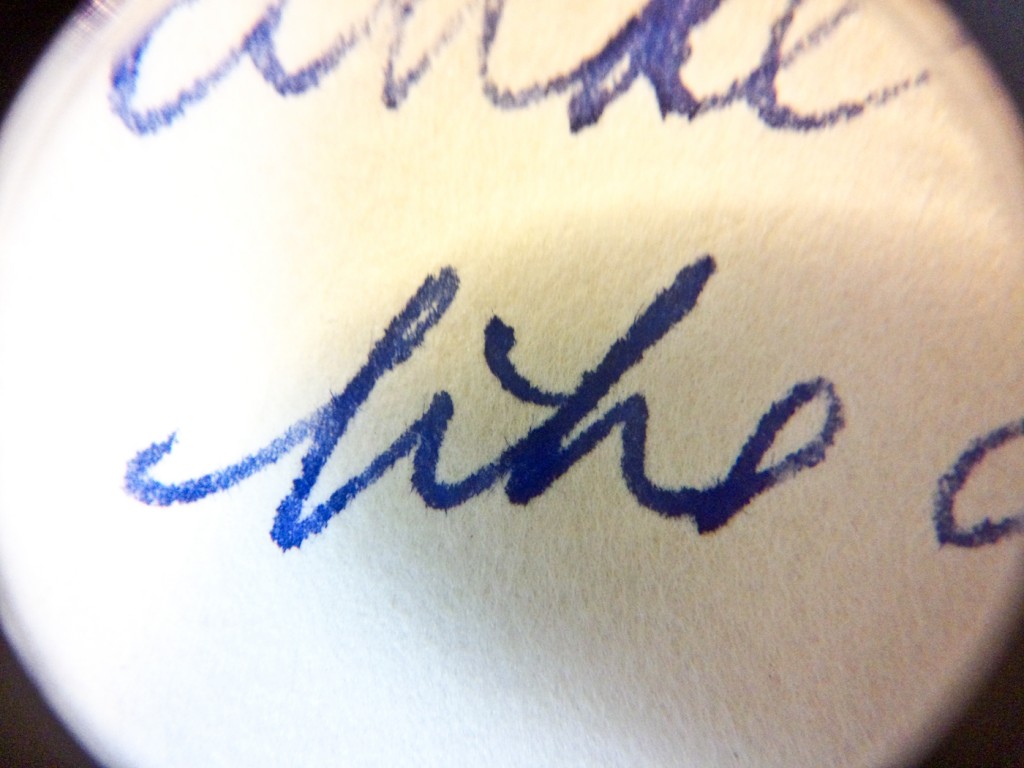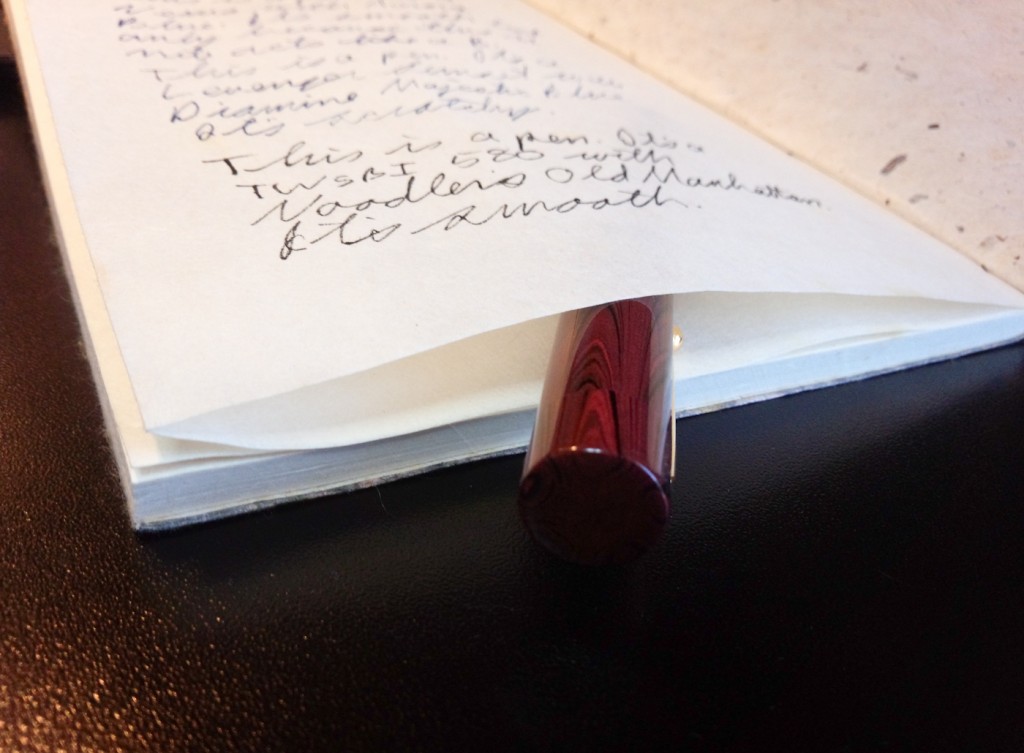I apparently bought a notebook in the 1990’s that I forgot I had. Since I’ve been cleaning out the storage closet, I discovered it in a box.
Me being me, I immediately began testing fountain pens on it.
The notebook is a handmade washi notebook from Kurotani Washi. Kurotani Washi has been making paper by hand for around 800 years. The notebook is just larger than B5 sized and has 25 folded sheets and a handmade cover bound in Japanese stitching.
I don’t remember buying it but I suspect I got it on a trip to Kyoto during the late 90’s. On one trip in particular, I visited several traditional shops and artisans that had been in business for hundreds of years. I used Diane Durston’s terrific Old Kyoto as my guide book and highly recommend it as an alternate way to tour Kyoto.
One of the shops I visited was Kyukyodo which was founded in 1663 and sold incense, paper and calligraphy supplies.
Because at the time I was studying Japanese calligraphy, I stocked up on brushes, ink sticks and random paraphernalia. I suspect I got the notebook at the same time. I almost certainly had some grand plan to write calligraphy and or poetry in it but it ended up in a box.
However, because I bought it, and because it was blank, I couldn’t just throw it out. Instead I broke out several fountain pens to see what would happen.
I was surprised at how smooth some of the pens felt and that the nibs didn’t become clogged with threads from the paper. It was a bit like writing on watercolor paper but most of the results looked pretty good.
Washi typically has a smooth side and a rough side. As such, each page consists of a large sheet that’s been folded and bound. The folding prevents the brush ink from bleeding through to the next page. During my tests, I found that only a Noodler’s Konrad with a flex nib and Noodler’s Apache Sunset bled through both pages.
Now that the notebook’s been written in, I suspect I’ll use it for morning pages just to use it up. It works well with my TWSBI 580 and my new Nexus Minimal.
After that, I suspect I’ll just throw it out.





